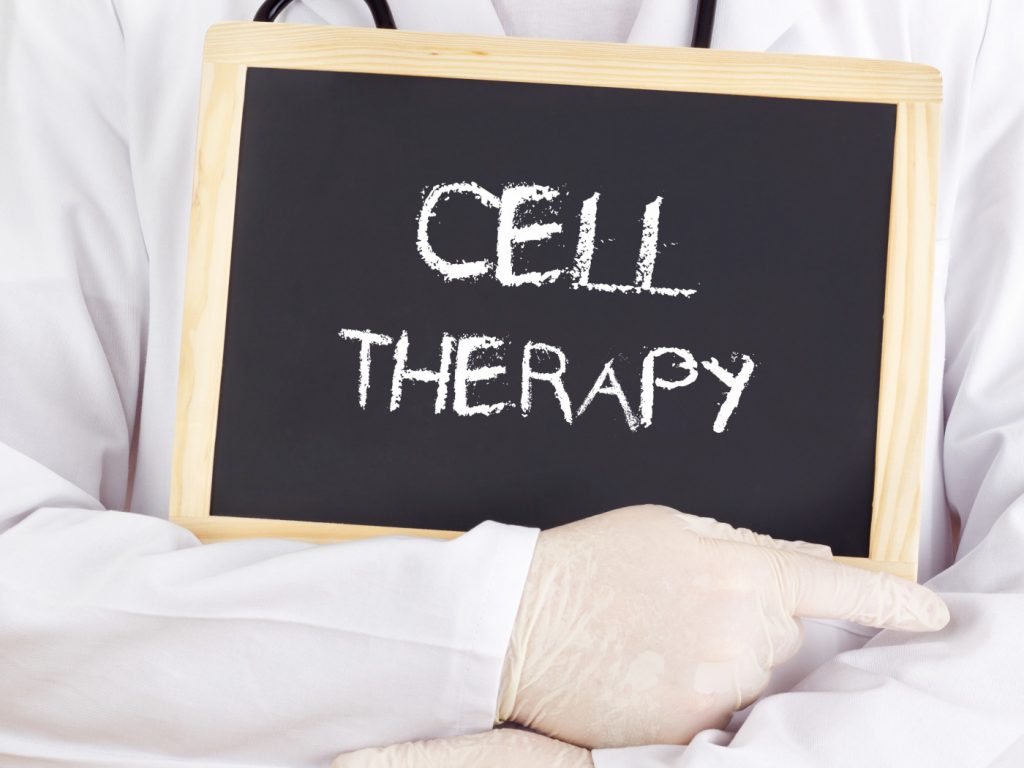Cell Therapy Reduces Fibrosis in PF Rat Models, Prompting Launch of Future Human Trial
Written by |

A cell therapy based on human and rat lung progenitor cells — called lung spheroid cells — reduced scarring (fibrosis) when infused in two rat models of pulmonary fibrosis (PF), a study has found.
The safety and efficacy of human LSCs is expected to be tested in a Phase 1 trial scheduled to start recruitment this year.
The study, “A pre-investigational new drug study of lung spheroid cell therapy for treating pulmonary fibrosis,” was published in the journal Stem Cells Translational Medicine.
Currently, treatments available for PF are limited. Studies have shown that cell-based therapies that deliver lung progenitor cells can help regenerate affected tissue, and fight the effects of fibrosis in the lungs.
In the study, researchers at North Carolina State University have further assessed the possibility of using progenitor lung cells to treat PF.
This research team had previously developed a three-step protocol to expand progenitor lung cells in the lab. In the last step, the progenitor cells are assembled into 3D structures, called lung spheroids cells (LSCs). LSCs were found to be safe and effective when collected from healthy lungs, expanded in the lab, and transplanted into a mouse model of PF.
Animal models that mimic human PF have allowed researchers to study the disease, and to explore new treatment alternatives. In the new study, researchers evaluated whether their PF-derived LSCs slowed down lung fibrosis in two bleomycin-induced lung fibrosis rat models: Wistar-Kyoto (WKY) rats and nude rats. Bleomycin is a highly toxic chemotherapy agent commonly used to trigger PF.
The first WKY rat model was used to test the efficiency and safety of LSCs grown from their own (autologous) lung cells, while the second nude rat model was used to test LSCs grown from biopsied idiopathic pulmonary fibrosis (IPF) human lung tissue.
First, the researchers evaluated the development of PF in both models. The nude rat model achieved the peak of fibrosis seven days after bleomycin treatment, according to the Ashcroft score — a scale that measures fibrosis severity, with scores ranging from zero (normal lung) to eight (maximum fibrosis).
At day seven, the mean Ashcroft score was 5.272, with fibrosis maintaining steady levels until day 30 (score 5.281). Furthermore, significant extracellular matrix deposition — the mesh-like scaffold surrounding cells — was visible at day seven and lasted through day 30.
In the WKY model, fibrosis increased steadily until it peaked at day 14 (Ashcroft score of 6.154) after bleomycin infusion. At day 30, fibrosis had improved slightly with the score decreasing to a mean of 5.117. Despite this difference, significant extracellular matrix deposition was visible at day 10 in WKY rats, which suggests that this model has a more gradual fibrosis reaction than nude rats.
Next, the team’s goal was to determine the minimum dose of cells that had a safe and effective therapeutic value.
The researchers obtained sufficient human IPF LSCs — which were expanded from human transbronchial biopsies of IPF patients — after 30 days, and rat LSCs after 35 days. A transbronchial biopsy is a minimally invasive procedure in which a bronchoscope through the nose or mouth is used to collect samples from the lung.
Human IPF LSCs were positive for markers of progenitor cells (including surfactant protein C, and club cell secretory protein) and of supporting cells (e.g., CD105, CD90, and aquaporin 5). Together, these cells help create an appropriate environment for progenitor cells to thrive and expand to more than 200 million.
Before injection into the animal models, LSCs were submitted to three washing steps to remove animal and lab contaminants. To demonstrate the manufacturing feasibility of LSCs, the researchers also tested for sterility, mycoplasma, endotoxins, purity, and cell viability.
The team evaluated three treatment doses: 1 million, 3 million and 5 million cells injected into the tail vein of the two rat models, 10 days after inducing fibrosis with bleomycin.
Nude rats treated with 3 million human IPF LSCs reduced their average Ashcroft score (meaning attenuated their fibrosis) to 5.49, compared to those treated with saline injection, which showed an average Ashcroft score of 6.53. Rats infused with 5 million human LSCs had their Ashcroft score reduced to 5.57. The group that received 1 million cells did not achieve statistically significant improvement in the Ashcroft score.
For WKY rats, while the control group had a mean Ashcroft score of 7.15, it was decreased to 6.03 with 1 million LSCs, to 5.57 with 2 million LSCs, and to 5.45 with 5 million LSCs.
Three million LSCs was then considered to be the most adequate dose, and the one to be used to calculate the necessary dosage for future clinical trials in humans.
Regarding treatment safety, tissue analysis revealed that no tumors formed after injection of LSCs. The cell therapy also triggered no liver toxicity, as measured by the levels of two liver enzymes — aspartate aminotransferase and alanine transaminase.
Overall, “these data demonstrate the safety and efficacy of lung spheroid cells in their application as therapeutic agents for pulmonary fibrosis, as well as their potential for clinical translation,” the researchers wrote.
“The safety and efficacy of LSCs will be tested in patients as part of a Phase I, randomized, standard-care-controlled study set to begin patient recruitment in 2020,” the team added. This clinical trial will involve intravenous injection of autologous LSCs in patients with IPF.






